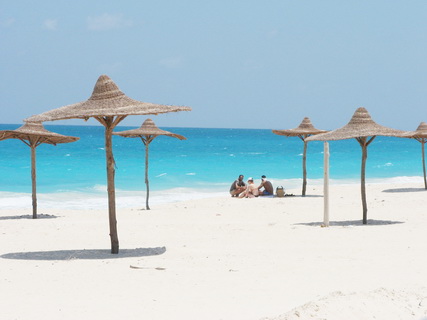
(Phot by Amany Kamal)
Having friends over in Egypt, my home for over a year and a half now, is always both a great joy and bit of a hassle. What should and shouldn’t I show them to give them the best holiday and the best impression of Egypt?
However, seven Dutch university friends proved to be an easy job. The main touristic highlights, in addition to exploring Cairo’s bars, relaxing on a felluka and introducing them to the best shishas in town and I would have been made. And when earlier this week it was announced that football supporters would be allowed in on Sunday’s Zamalek match, I viewed this as an opportunity to make the trip even better.
Less than a year ago, I had attended a Zamalek match, during which 10,000 supporters were allowed, as an exception on the rule to ban supporters from stadiums. Beholding the huge banners and fireworks of the ultras was one of the best, most impressive experiences I had in Egypt, and back then there seemed to be no reason for the festive atmosphere to turn violent.
Gathering in Tahrir Square at around 6pm with the seven Dutch and one Egyptian friends, the news of the ‘clashes’ reached us. Not knowing any more details, we took taxis towards the stadium.
The bridge towards the stadium was closed from one side so we had to take a detour. Easily overcoming a checkpoint, we ended up in a traffic jam on the main street to the stadium. The driver was nervous, he was listening to the news on the radio, all about the clashes in front of the stadium. At one point, he decided to turn around and left us to walk the remaining part to the stadium.
The first thing that struck me was that most people were walking away from the stadium, instead of towards it. A lot of ambulances with screaming sirens tried to pass through the traffic. Police were abundant, as well as some military vehicles. My friends were calm, not knowing Cairo and never having been to a protest. “This looks like the apocalypse,” one joked.
Reaching the stadium, we passed a burned police car, and saw signs of the clashes in the form of rubbish and stones on the street. “My eyes hurt, what’s with the air here?” said one of my friends, unknowingly describing his first tear gas experience.
The first sight of the entrance to the stadium made me determined to turn back. Several hundred ultras gathering in front of the gate, held in check by two police vans, seemed not to be the kind of situation I wanted to drag my friends into. Disappointed at having missed the match, but confident it was the right decision to avoid any risk, we entered a minibus and headed back Downtown.
Only later, when worried messages started to flow in, we learned what had happened barely over an hour before we arrived. We learned that the ambulances had not been using their sirens just to bypass the traffic jam, as I had reassured my friends earlier.
As the death toll rose throughout the night, I realised that 8 February 2015 could be added to the ever-expanding list of dark days Egypt has witnessed since its revolution, and that I had been close to bringing seven visitors right into it.






